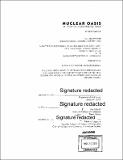| dc.contributor.advisor | Ana Miljački. | en_US |
| dc.contributor.author | Sablone, Alexis (Alexis Jay) | en_US |
| dc.contributor.other | Massachusetts Institute of Technology. Department of Architecture. | en_US |
| dc.date.accessioned | 2016-07-01T18:44:39Z | |
| dc.date.available | 2016-07-01T18:44:39Z | |
| dc.date.copyright | 2016 | en_US |
| dc.date.issued | 2016 | en_US |
| dc.identifier.uri | http://hdl.handle.net/1721.1/103486 | |
| dc.description | Thesis: M. Arch., Massachusetts Institute of Technology, Department of Architecture, 2016. | en_US |
| dc.description | Cataloged from PDF version of thesis. | en_US |
| dc.description | Includes bibliographical references (page 13). | en_US |
| dc.description.abstract | Each year, we produce 9,000 metric tons of high-level nuclear waste to add to the other 250,000 that have accumulated over the last few decades. While there are no clear plans for its permanent storage, one thing remains certain: it will outlive us all and everything we know. Current laws stipulate that "permanent storage solutions" must contain nuclear waste and its deadly radioactivity for 10,000 years though other estimates say 100,000 is probably more accurate. We are now living in the Anthropocene-the self-proclaimed Age of Man. We have dubbed ourselves a "geological force" but lack the ability to comprehend the implications of our actions at geological scales of time. Some may perceive this as persistent form of recklessness. The challenge of nuclear waste directly confronts us with our own chronotopic inadequacies. Architecture is directly implicated here-challenged with the need for permanence-permanence in terms of both materiality and meaning. This thesis investigates the nature of permanence. It will look far into the past and far into the future, recalibrating our sense of time, space and scope in order to examine how architecture can reconcile scales of geologic and human time. This thesis asks: Amidst the dramatic, inevitable changes our world will see over the next 10-100 thousand years-changes more fantastic than any piece of science fiction could describe-is there a way for architecture to last? To communicate a consistent message across millenia? | en_US |
| dc.description.statementofresponsibility | by Alexis Sablone. | en_US |
| dc.format.extent | 143 pages | en_US |
| dc.language.iso | eng | en_US |
| dc.publisher | Massachusetts Institute of Technology | en_US |
| dc.rights | M.I.T. theses are protected by copyright. They may be viewed from this source for any purpose, but reproduction or distribution in any format is prohibited without written permission. See provided URL for inquiries about permission. | en_US |
| dc.rights.uri | http://dspace.mit.edu/handle/1721.1/7582 | en_US |
| dc.subject | Architecture. | en_US |
| dc.title | Nuclear oasis : the story of 10,000-year-old trash | en_US |
| dc.title.alternative | Story of 10,000-year-old trash | en_US |
| dc.type | Thesis | en_US |
| dc.description.degree | M. Arch. | en_US |
| dc.contributor.department | Massachusetts Institute of Technology. Department of Architecture | |
| dc.identifier.oclc | 952410764 | en_US |
